Tire Cracking Between Treads: Causes, Solutions, Risks
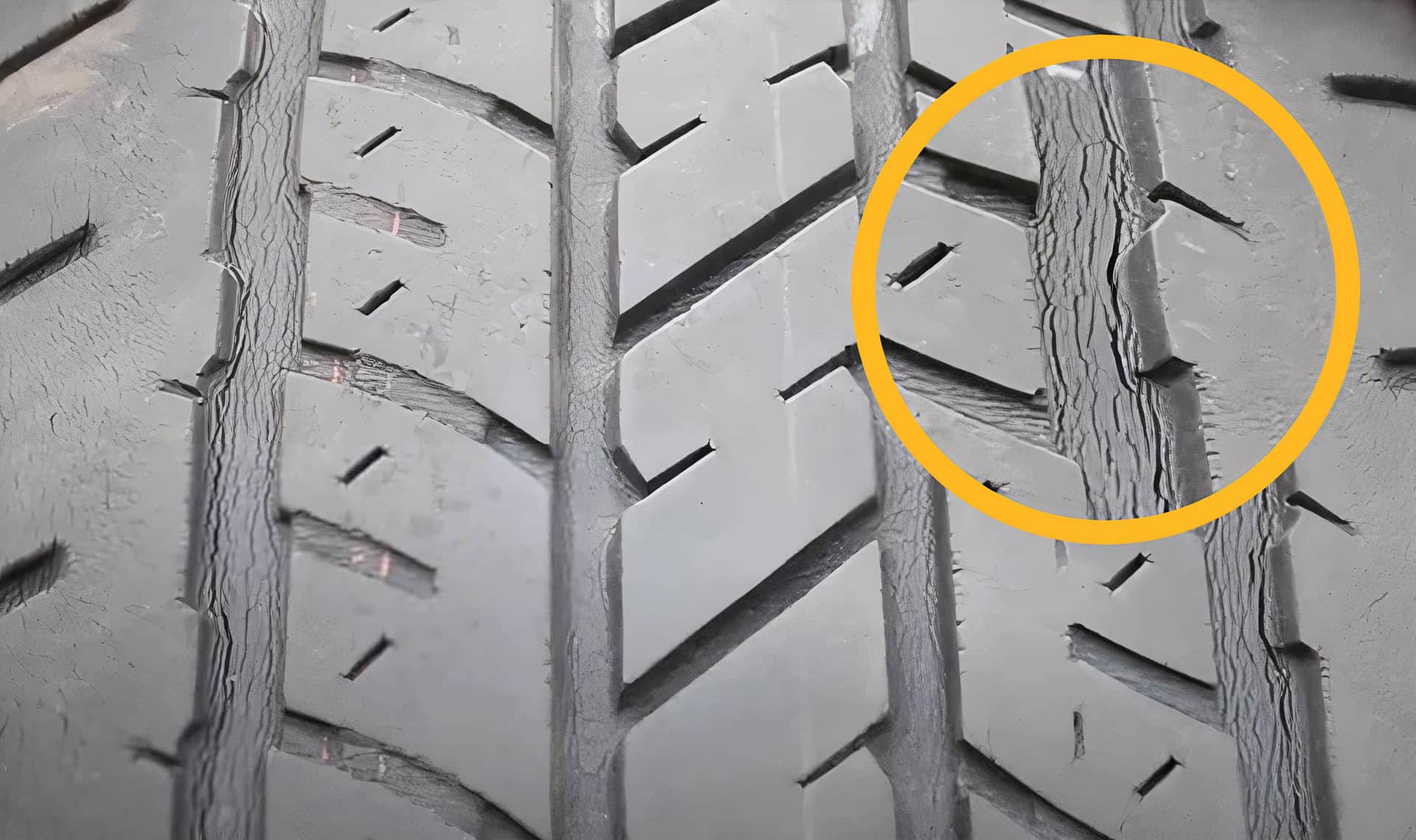
Tire cracks may seem harmless at first glance, but they pose serious risks that could lead to a potential hazard on the road – a blowout.
In this blog post, we will discuss the causes of tire cracking between treads, its associated risks with driving on cracked tires, and solutions to prevent these hazards from happening again. So buckle up and read along because you cannot afford to overlook your car’s tire health!
Key Takeaways
Defining Tire Cracking Between Treads
Tire cracking between treads refers to the formation of small visible cracks, splits or fractures that appear on the rubber surface of the tire’s tread area. Tire cracks can come in different forms and sizes, ranging from advanced dry rot affecting the structural integrity of the tire to small cosmetic cracking.
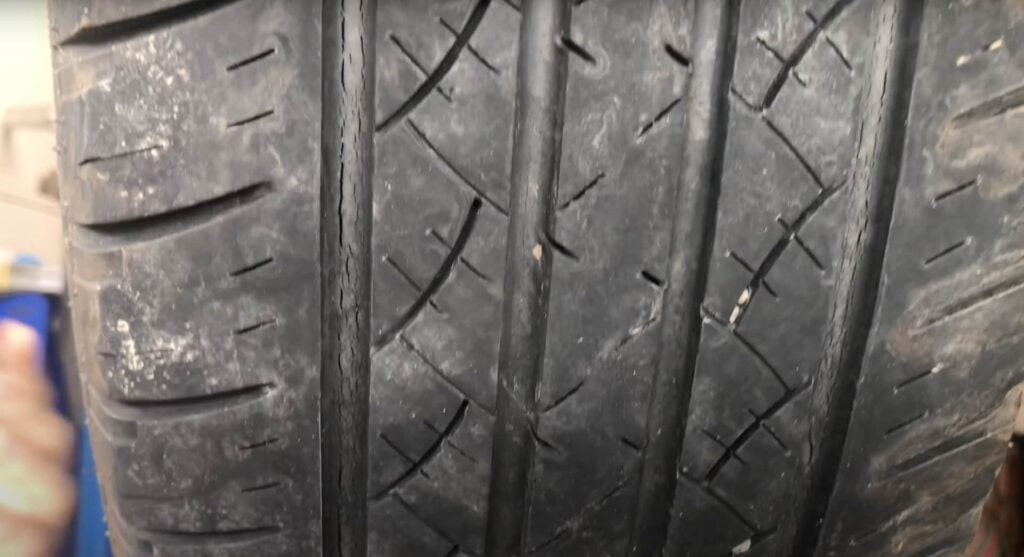
Dry rot and tire cracking between treads occur due to several factors, such as UV exposure, climate effects on tires, age, and improper maintenance. These cracks can compromise your tire’s safety by increasing the risk of a blowout or tread separation while driving.
Why Do Tires Crack Between Treads?
Tire cracking between treads can occur due to a number of reasons.
Aging
One common cause is tire aging, where the rubber deteriorates over time leading to cracks in the tread area.
Dry Rot
Another reason for tire cracking could be dry rot, which occurs when tires are exposed to direct sunlight and heat, causing the tire’s rubber part to harden and crack.
Overloading
In addition, overloading or improperly inflating a tire can cause excessive stress on the sidewalls and lead to cracking or blowouts.
Improper Use
Driving too aggressively or frequently driving on rough terrain can also cause tire tread wear and eventually lead to cracks between treads.
Friction from hard-braking and rapid acceleration causes uneven wear patterns and weakens the structural integrity of tires.
Extreme Temperatures
Similarly, climatic conditions such as extreme temperatures (hot or cold), humidity levels, snow/ice buildup during winter months can impact tire condition as well leading towards issues like dry rotting.
It's essential that drivers properly maintain their tires by regularly checking inflation levels, rotating them frequently, and replacing any old or worn-out tires promptly.
Can cracked tires be fixed?
Cracked tires may not be entirely repairable, but you can use fillers to mask the cracks. These fillers are available on the market and provide an easy way to cover up any unsightly cracks or blemishes.
While a filler can help to improve the look of a cracked tire, it cannot reverse the effects of dry rot. Moreover, using fillers on severely cracked tires should be avoided as it may lead to potential dangers during driving.
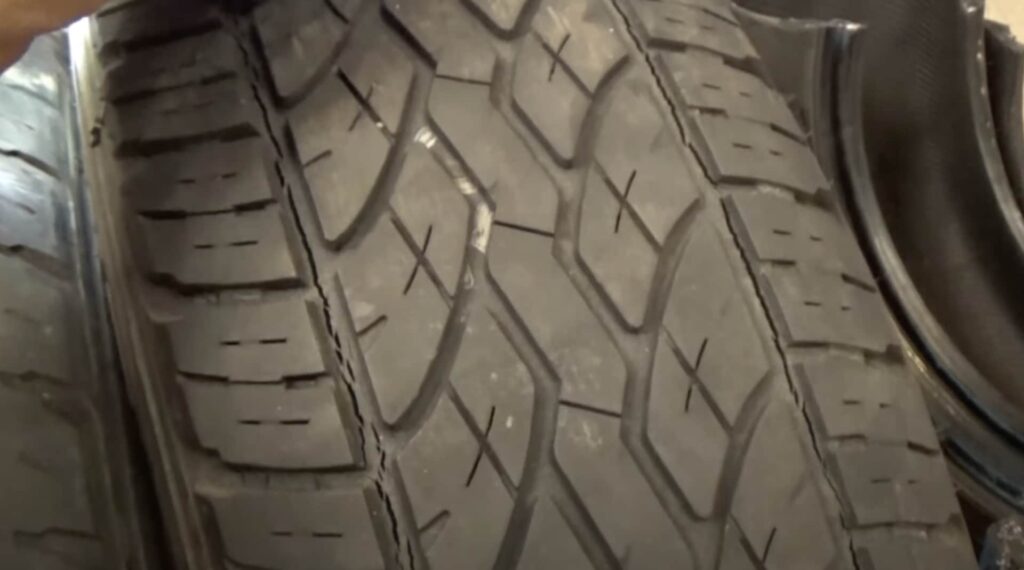
Should cracked tires be replaced?
Cracking in your tires can be a serious safety hazard and should not be taken lightly. If you find severe cracks throughout the tire’s tread surface and they extend deep into the surface, it is time to consider replacing them with new tires as soon as possible.
While small cracks are usually nothing to worry about, now is probably a good time to begin shopping for a new set of tires before it gets any worse.
Are small cracks in tires dangerous?
Generally, cracks in your tires do not always require replacing the tires – small cracks can be attributed to regular wear and tear, or a sign of aging.
However, if the cracks are deep or severe, this could pose a risk on the road and it is best to consider replacing your tires as soon as possible for safety reasons.
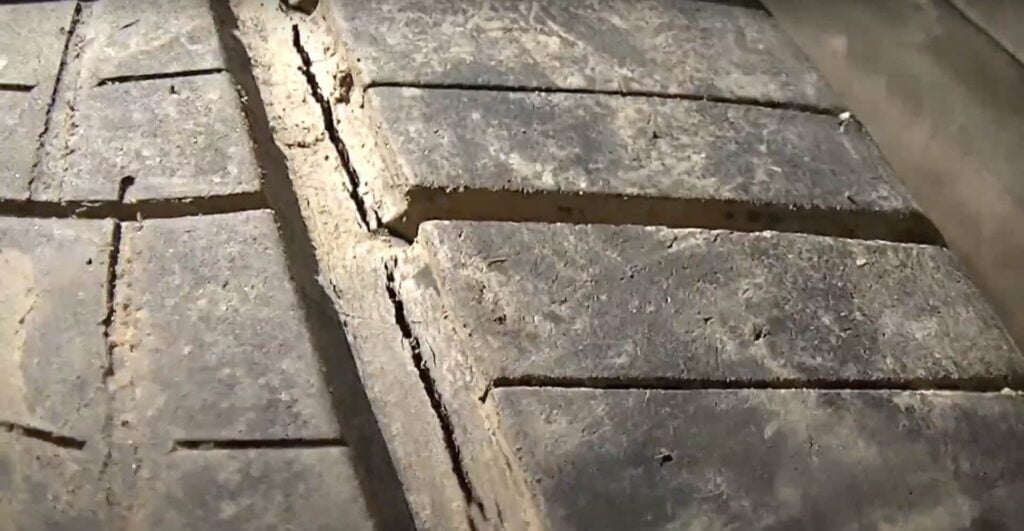
Preventing And Dealing With Tire Cracking
Regular tire maintenance, proper inflation and use, avoiding overloading and hard-driving, identifying and replacing old or worn-out tires, and using tire protectant products are all effective ways to prevent and deal with tire cracking.
Regular Tire Maintenance
Regular tire maintenance is crucial for ensuring that your tires are in excellent condition and safe to drive on. This includes checking the air pressure, rotating the tires properly, and getting them balanced regularly.
Proper Tire Inflation
Proper tire inflation is important in preventing tire cracking and dry rot. Underinflated tires cause excessive stress on the tread and sidewalls, leading to overheating, which can damage the structural integrity of the tire. Overinflation can also lead to tires cracking due to premature wear and tear on the center treads of the tire.
Avoid Overloading
Overloading a vehicle with excess weight can put significant stress on the tires, leading to cracking and even blowouts. It’s crucial to stay within your car’s weight capacity stated by the manufacturer and avoid carrying excessive luggage or cargo.
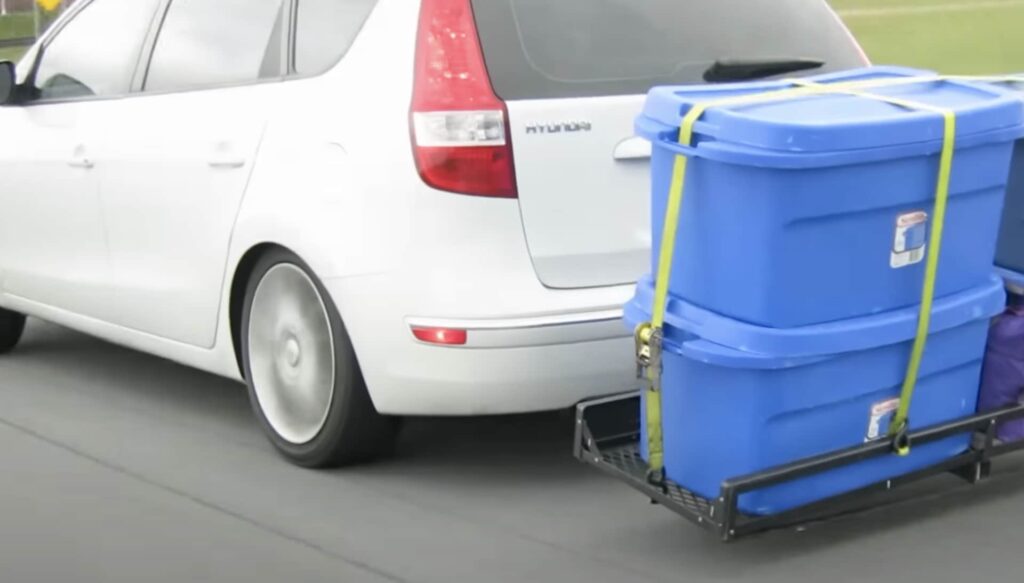
Avoiding Hard-driving
To prevent tire cracking, it’s important to drive gently and maintain a steady speed on highways. Usually, highways have less friction compared to city roads; hence driving too fast or abruptly may cause wear out of tire tread quickly.

Use Of Tire Protectant Products
Applying tire protectant products is an effective way to prevent tire cracking and damage caused by various weather conditions. These products can help maintain the integrity of a tire’s structural components preventing dry rot or worn-out treads. Tire protectants also enhance the appearance of tires, giving them a glossy finish.
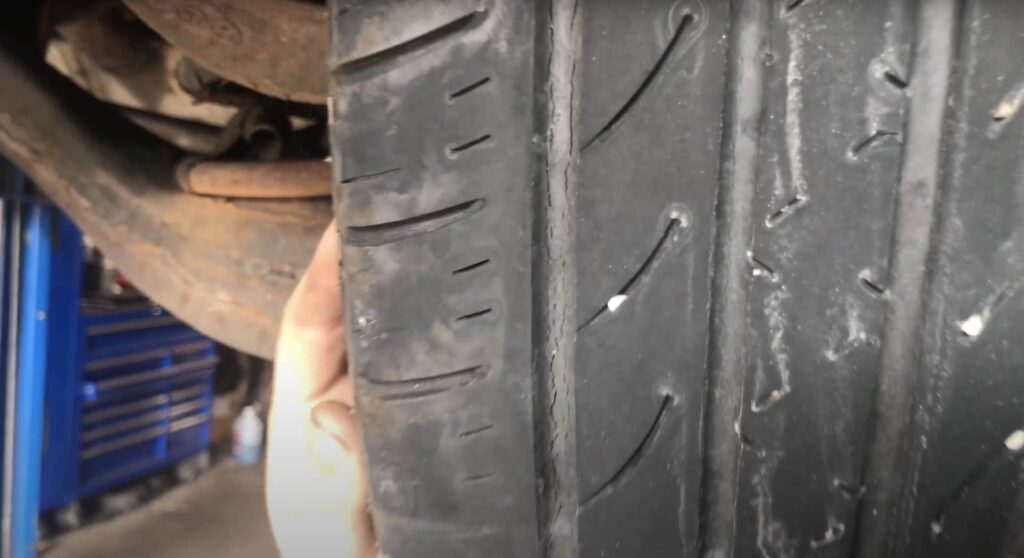
Risks Associated With Driving On Cracked Tires
Driving on severely cracked tires can be very dangerous as it compromises the tire’s structural integrity. These cracks can cause the tire to lose its tread or even lead to a blowout.
How To Identify And Check For Tire Cracks
To check for cracks, start by examining the tread block area of each tire using a flashlight. Look closely for any signs of small or advanced dry rot cracking on the outside edges of the tread blocks or sidewalls. If you find a small crack or any damage, it’s always best to have your tires inspected by an expert before considering whether they need replacing.
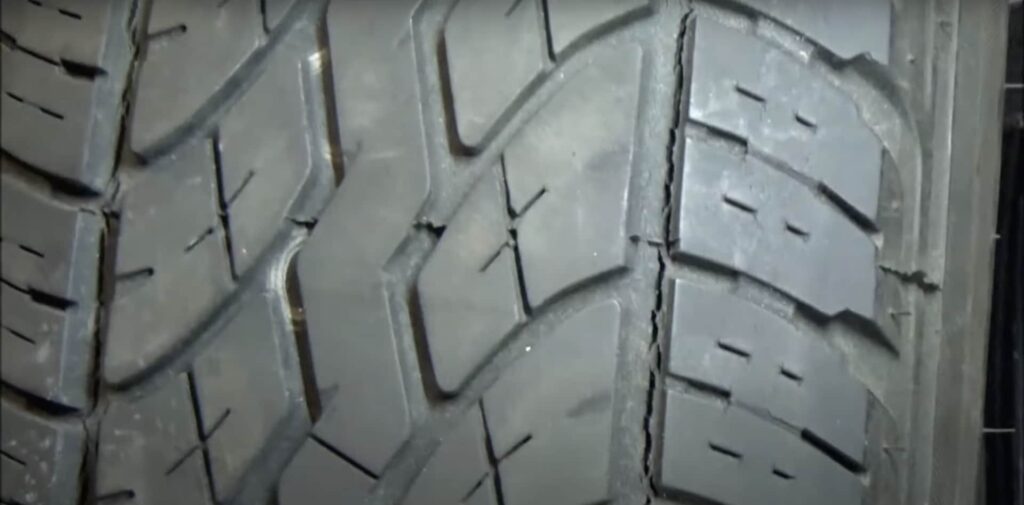
In addition to visually inspecting your tires, use a penny test to determine if there is enough tread depth remaining on each tire. Insert the coin into several places between treads with Lincoln’s head upside down facing you; if the top of his head disappears from view, there is sufficient tread depth left on that part of the tire.
Conclusion
Overall tire neglect has a direct correlation with a serious risk of advanced dry rot that could lead to unsafe cracks in between the treads which weaken the structural integrity of the tire as well as make it more susceptible to punctures leading to flat/bald tires.
Neglected tires have a reduced lifespan which ultimately results in increased cost expenditure at replacement time. It’s crucial for drivers not only to stay vigilant about their tire condition but also to consult licensed professionals who perform routine checks for better safety measures
FAQs:
Should I get new tires or can I still use my old tires if I notice that tire cracks form on my tires?
Tires that exhibit wear patterns including severe cracking, should be checked by trained professionals immediately as these symptoms suggest compromised safety standards for drivers.. In general terms however as long as the sidewalls appear normal w/o excessive tire bulging/indentations etc., then replacement isn’t imminent necessary; although further analysis should always be carried out by industry-standard testers.
